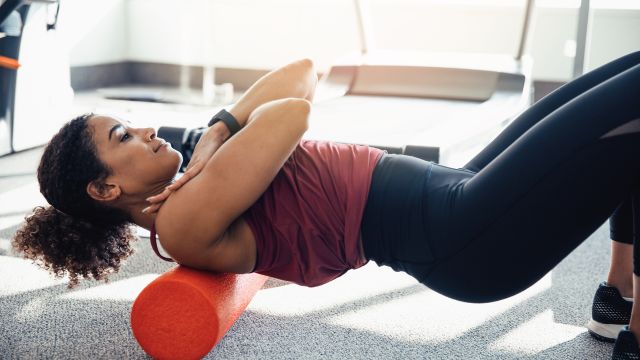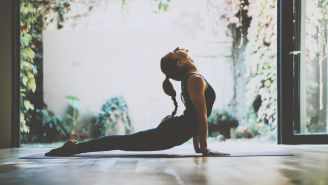Updated on June 23, 2022.
Go into any gym, physical therapist’s office, or rehab center and you’ll probably find foam rollers stacked on the floor or hanging on a rack. Many people who exercise or want to lessen their muscle pain swear by using the soft cylinders. Though the research is inconclusive, they claim the mini-massage foam rolling provides can temporarily ease muscle aches whenever they need to get the kinks out.
Foam rollers can fit into your regular stretching routine, too. “Prior to working out, you can use foam rolling to help with range of motion and flexibility short term,” says Michael Simpson, DO, a family medicine and sports doctor with LewisGale Hospital Pulaski in Pulaski, Virginia. “That’s what it’s been proven to help with,” he adds.
For example, a 2020 meta-analysis in Sports Medicine found that foam rolling improved range of motion compared to doing nothing. A separate analysis published in Frontiers in Physiology in 2019 found that rolling before exercise increased the sprint performance and flexibility of runners by small amounts.
How foam rolling works
Foam rolling relieves tissue pain via a stretching technique called self-myofascial release (SMR). The myofascial tissue is a connective sheet, or band, of tough membranes that wrap and cover the muscles. Think of it like that thin, white, fibrous layer that envelops the inside of an orange.
Stress, overuse, trauma, injury, and improper form during exercise are just a few things that can cause muscles (fascia) to stiffen. That tightness—particularly at anchor points, where muscle is attached to bone—can lead to soreness and loss of flexibility. Using a foam roller to apply pressure to affected areas can temporarily ease aches and restore muscle function.
Foam roll before and after workouts
If you decide to foam roll, try a quick session either before or during a 10- to 15-minute warmup. Depending on the type of workout you’re doing, your warmup might include stretches, as well.
After exercising, you can use a foam roller as a recovery tool. One very small study published in the Journal of Athletic Training in 2015 found that rolling for 10 to 20 minutes helped relieve pain, especially after high-intensity workouts. For further relief, use the foam roller on the sore areas for the next three days.
You don’t need to be an avid gym-goer to use this technique, either. For example, if you’re sore from sitting at a desk all day or from a long road trip, you can use a foam roller at home to release muscle tension.
How to roll out tension
There is no expert consensus about the best foam rolling technique, pressure, and speed.
That said, the National Academy of Sports Medicine (NASM) recommends you move the foam roller an inch per second, or until you find a spot that is particularly tender. Then, hold the roller on that spot for 30 seconds, or until the muscle begins to relax. You can repeat this another two to three times if the muscle is still sore. For more sensitive areas, be cautious with how much pressure you apply.
Dr. Simpson suggests using a foam roller on your hamstrings, quadriceps, muscles on the outside of the upper thigh, lower back, upper back, and neck. Avoid foam rolling on areas of the body that aren’t dense in muscle tissues, such as the abdomen.
When to skip foam rolling
“Foam rolling in general is pretty safe,” says Simpson. However, there are times when you shouldn’t use one. Avoid foam rolling if:
- You have an injury or recently underwent surgery
- You have a skin infection, eczema, or an open wound
- You have heart, kidney, or any other organ failure
- You have bleeding issues, a history of blood clots, or you take anticoagulants (blood thinners)
Those with a skeletal muscular condition, such as rheumatoid arthritis or bursitis, should avoid rolling near painful joints.
If you’re not sure foam rolling is safe for you, ask a physical therapist or healthcare provider (HCP). Pregnant people should check with an HCP before starting.
Because you’re applying pressure to painful points, foam rolling may be uncomfortable at first. But as you continue to pinpoint sore areas, you should feel a release of tension. Note that if you feel intense pain, stop. Remember that more pain does not mean increased benefits.
Choosing the right roller
Foam rollers come in a multitude of shapes, sizes, and colors: from pink to lime green, dense to light, ridged to flat.
“Different people have different methods of using a foam roller. Some will use a different stiffness, some will use a different size,” says Simpson. “There's really no brand or type that's necessarily better than the other.” The important factor is to choose one that works for you, based on your pain needs.







